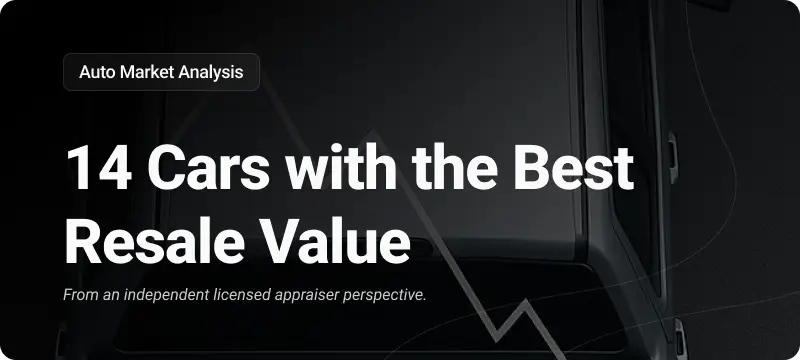After an accident, your car’s value can take a significant hit—even if it’s repaired to look and drive like new. This loss in value is known as Diminished Value (DV), and it’s an essential concept to understand when dealing with insurance claims. But not all diminished value is the same. Two major types, Immediate Diminished Value and Repair-Related Diminished Value, can affect your settlement in different ways.
So, what’s the difference, and how do these types of DV impact your claim? Let’s break it down in simple terms to help you navigate the process and get the compensation you deserve.
DOWNLOAD: “Repair VS Immediate Diminished Value”.PDF
What Is Immediate Diminished Value?
Immediate Diminished Value refers to the loss in a vehicle’s market value right after an accident, even before any repairs are made. This type of DV reflects the stigma of damage caused by the accident itself.
Key Characteristics of Immediate DV:
- Occurs Immediately: The value drop happens the moment the accident occurs, regardless of repair quality or extent.
- Market Perception Matters: Potential buyers and dealers are less willing to pay full price for a vehicle with an accident history, even if it’s in perfect condition.
- Linked to Vehicle History: Tools like Kelley Blue Book and AutoCheck help evaluate pre- and post-accident market value, and accident records can permanently affect a vehicle’s resale value.
Example: Imagine a sedan worth $20,000 before an accident. After the collision, the car’s market value drops to $18,000—even though repairs haven’t begun. That $2,000 loss is the Immediate DV.
Additionally, damage multipliers often factor into Immediate DV calculations. For example, minor damage like a scratched bumper may result in a smaller value drop, while moderate damage or structural damage can cause a steep decline in the vehicle’s worth.
What Is Repair-Related Diminished Value?
Repair-Related Diminished Value occurs when a car’s value is reduced because of poor-quality or incomplete repairs. While Immediate DV is tied to an accident’s stigma, Repair-Related DV depends on the actual work done on the vehicle.
Key Characteristics of Repair-Related DV:
- Linked to Repair Quality: Poor repairs, mismatched paint, or remaining structural damage can significantly impact value.
- Physical Evidence: Potential buyers or appraisers can often see or feel signs of incomplete repairs, making the car less desirable.
- Dependent on Repair Shop Skill: A skilled repair shop can minimize this type of DV, while subpar repairs can amplify it.
Example: After the sedan’s accident, repairs are made. However, the paint job doesn’t match, and the frame isn’t fully restored. As a result, the car’s market value drops by another $1,000. That reduction is the Repair-Related DV.
Repair-Related DV also incorporates mileage multipliers, as cars with higher mileage often experience less DV impact. For example, a car with 120,000 miles may lose less value from subpar repairs compared to a newer car with only 10,000 miles.
How They Affect Your Insurance Claim
Both Immediate and Repair-Related DV can impact the amount you’re eligible to claim from your insurance company. However, how they’re handled in your claim may differ depending on the insurer and your state’s laws.
Immediate DV and Insurance Claims
- When It’s Considered: Immediate DV is often included in claims for vehicles with significant market value drops after an accident.
- Evidence Required: You’ll need to prove the difference between the pre-accident and post-accident value, often using tools like Kelley Blue Book or professional appraisals.
- State Variances: Some states, like Georgia, explicitly allow claims for diminished value, while others may restrict them.
Repair-Related DV and Insurance Claims
- Proof of Poor Repairs: To claim Repair-Related DV, you’ll need evidence that the repairs were incomplete or poorly executed. This could include photos, repair invoices, or an independent inspection.
- Cost of Repairs Matters: When the cost of repairs is high, insurance providers may be more willing to negotiate Repair-Related DV claims, as this reflects the severity of the damage.
Pro Tip: Always keep a detailed record of the accident, repairs, and all communications with your insurer to maximize your chances of a successful claim.
The Role of Insurance Providers and Attorneys
Working with insurance providers can be challenging, as their goal is often to minimize payouts. However, understanding how Immediate and Repair-Related DV are calculated gives you leverage.
If your insurance provider disputes your claim or undervalues the damage, hiring an experienced car accident attorney can make a significant difference. Attorneys can:
- Advocate for fair compensation based on the vehicle’s original condition.
- Navigate complex state laws and regulations surrounding DV claims.
- Negotiate effectively with insurance providers to ensure a better settlement.
Fault Driver and Diminished Value Claims
The fault driver plays a significant role in DV claims. If the accident was caused by another driver, their insurance policy is often responsible for compensating you for both Immediate and Repair-Related DV.
In cases where you’re the at-fault driver, your ability to claim diminished value depends on your insurance policy. Many policies do not include DV coverage unless specifically added, so understanding your policy is critical.
Can You Claim Both Immediate and Repair-Related DV?
In most cases, claims for Immediate DV and Repair-Related DV are handled separately, and the ability to claim both depends on your state’s laws and the terms of your insurance policy.
For example:
- Immediate DV may be claimed as part of the accident settlement.
- Repair-Related DV might arise later if the quality of the repairs negatively impacts the car’s value.
It’s essential to discuss these distinctions with your insurance adjuster or an independent appraiser to ensure you’re pursuing all available compensation.
How to Maximize Your Diminished Value Claim
If you believe your car has suffered from either type of diminished value, here’s how to strengthen your case:
- Get a Professional Appraisal
- Hire an independent appraiser to assess your vehicle’s pre- and post-accident value. A tool like the Diminished Value Calculator can give you an estimate before you proceed.
- Document Everything
- Collect accident photos, repair invoices, and market value estimates for your vehicle. These records will support your claim.
- Understand Your Policy and State Laws
- Research your state’s diminished value laws and review your insurance policy to know what you’re entitled to claim.
- Consult an Attorney
- If disputes arise, seek advice from an experienced car accident attorney to strengthen your case.
- Negotiate with Evidence
- Present your documentation clearly and professionally when discussing your claim with the insurer.

Conclusion
Understanding the differences between Immediate and Repair-Related Diminished Value is crucial for navigating insurance claims and protecting your car’s financial worth. While Immediate DV reflects the market’s reaction to an accident, Repair-Related DV depends on the quality of the repairs. Both types can significantly impact your settlement and resale value.
Whether you’re filing a claim or negotiating with your insurer, having the right tools, knowledge, and support can make all the difference. Tools like the Diminished Value Calculator, guidance from an experienced car accident attorney, and accurate valuations from Kelley Blue Book will help you ensure your car’s original condition is properly represented.
Are you ready to advocate for the true value of your vehicle? By gathering evidence, understanding your rights, and staying persistent, you can ensure your insurance claim reflects the actual loss your car has suffered.





